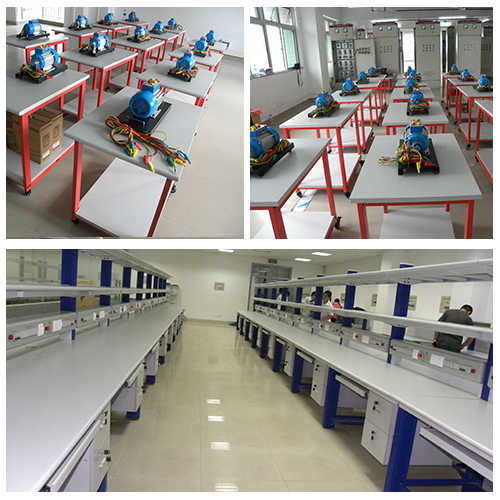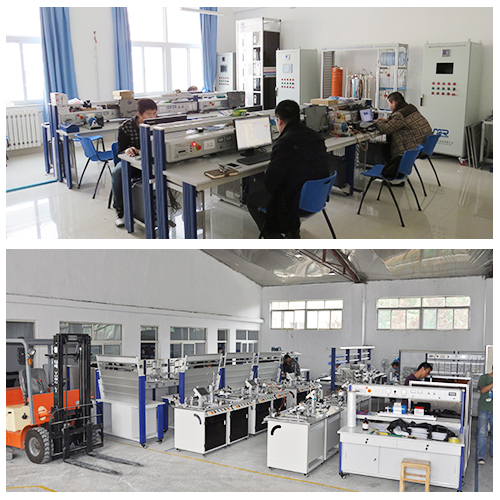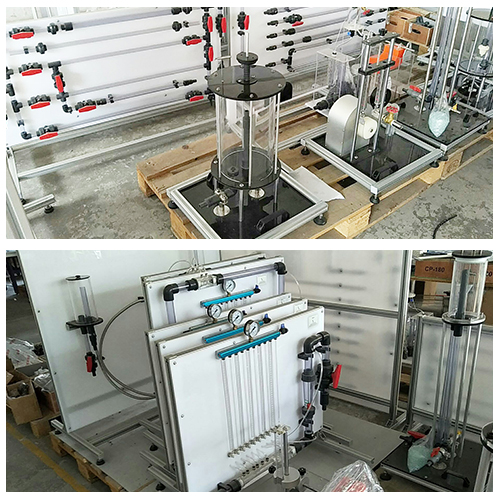MR042R Absorption Refrigeration System Teaching Equipment Educational Equipment Refrigeration Training Equipment

Learning objectives/experiments
demonstrate the basic principle of an absorption refrigeration system
absorption refrigeration system and its main components
operating behaviour under load
Scope of delivery
1 experimental unit
1 hose
1 pressure reducer
1 set of instructional material
Features
model of an absorption refrigeration system
boiler operated alternatively by electrically
adjustable heating at the evaporator serves as cooling load

Description
Refrigerating plants make use of the fact that a refrigerant evaporates at low pressure. In absorption refrigeration systems, the absorption of ammonia in the water produces this low pressure. The absorption process is driven by thermal energy, which can come for example from industrial waste heat or solar collectors to operate these systems.
This basic principle of an absorption refrigeration system is demonstrated in the MR042R experimental unit taking the example of an ammonia-water solution with the ammonia acting as refrigerant. In the evaporator the liquid ammonia evaporates and withdraws heat from the environment. To keep the evaporation pressure low, the ammonia vapour in the absorber is absorbed by the water. In the next step, ammonia is permanently removed from the high concentration ammonia solution to prevent the absorption process from being halted. For this purpose, the high concentration ammonia solution is heated in a generator until the ammonia evaporates again. In the final step, the ammonia vapour is cooled in the condenser to the base level, condenses and is returned to the evaporator. The low concentration ammonia solution flows back to the absorber. To maintain the pressure differences in the system, hydrogen is used as an auxiliary gas.

In process technology systems the resulting waste heat can be used for cooling. In small mobile systems, such as a camping refrigerator or minibar in a hotel, the required heat is generated electrically. Another benefit of absorption refrigeration systems is their silent operation.MR042R demonstrates the functional principle of an absorption refrigeration system with its main components: evaporator, absorber, boiler as generator with bubble pump, condenser. The boiler can be operated with electrically. Another electric heater at the evaporator generates the cooling load.Temperatures in the refrigeration circuit and the heating power at the boiler and at the evaporator are recorded and displayed digitally.

Description
Technical details
Specification
operation of an absorption refrigeration system
main system components: evaporator, absorber, boiler with bubble pump, condenser
ammonia-water solution as working medium, hydrogen as auxiliary gas
boiler to separate ammonia
bubble pump for transportation in the circuit
adjustable electrical heater at the evaporator serves as cooling load
boiler is alternatively heated by electrical heater
piezoelectric igniter for gas operation
digital displays for temperature and power

Technical data
Working medium: ammonia-water solution
Auxiliary gas: hydrogen
Electric heater: 125W
Evaporator heater, adjustable: 50W
Measuring ranges
temperature: 4x -80…180°C
power: 0…150W
230V, 50Hz, 1 phase
230V, 60Hz, 1 phase
120V, 60Hz, 1 phase




